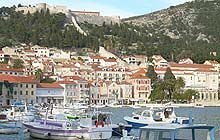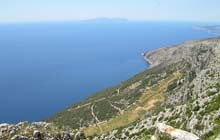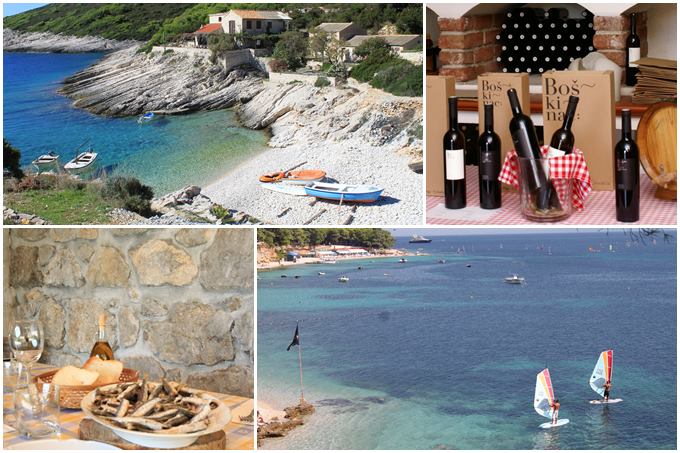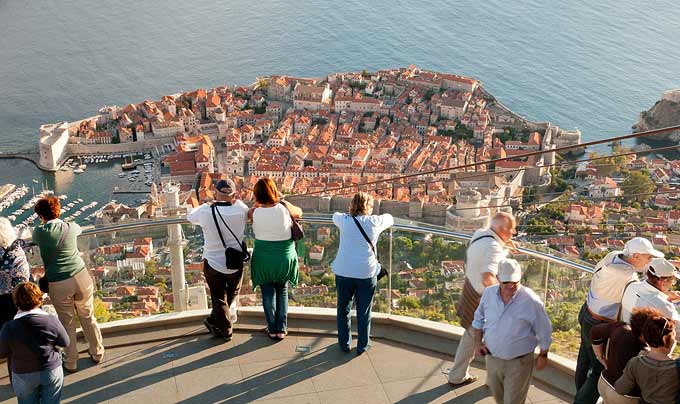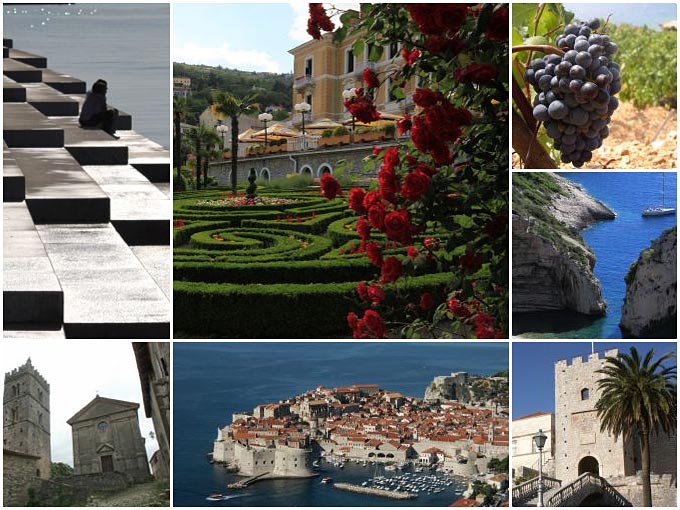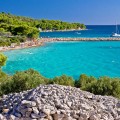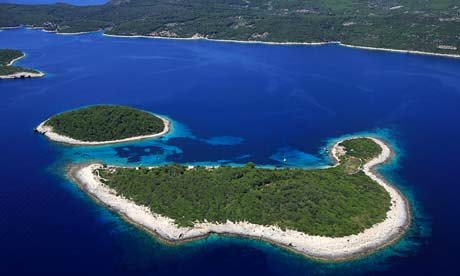
The Croatian islands offer everything from nudist beaches to windsurfing, and organic wines to all-night dance parties,with over a thousand islands, islets and reefs, of which 66 are inhabited. You can bed down in a boutique hotel or a back-to-basics cottage , depending on your pain threshold. It’s also outside the eurozone so your holiday cash will go a bit further.
Best for water sports: Brac
Zlatni Rat, on Brac’s south coast, is Croatia’s most photographed beach, and its top windsurfing spot. The nearby fishing village of Bol may have succumbed to multi-lingual menus and a miniature-train, but it remains a haven for water sports enthusiasts. Besides windsurfing, Zlatni Rat offers scuba diving, sea kayaking, parasailing, water skiing, jet skiing and wakeboarding. For the uninitiated, pedal boats provide a taster.
Best for name-dropping: Hvar
Centring on Venetian-era Hvar Town, Croatia’s most fashionable island destination warrants exploring beyond its capital’s 16th-century fortifications. Leave the design hotels and chichi cocktail bars behind to hike or mountain bike through a rugged landscape of silvery-purple lavender fields and the hillside vineyards that produce velvety red Plavac. Or dodge the celebrity-spotters on the palm-lined seafront promenade to take a sea-kayaking trip round the nearby Pakleni islets.
Best for back-to-basics: Kornati archipelago
The Kornati archipelago is a scattering of 89 islands, islets and reefs, which has been designated a national park. There’s no fresh water here, and the islands are rocky and arid. In the past, their scanty vegetation was used for summer grazing, and shepherds and fishermen from Murter built stone cottages to use as seasonal accommodation. With a nod to sustainable tourism, several of these dwellings are now available to rent for a no-frills, environmentally friendly holiday.
Best for local food and wine: Vis
A Yugoslav military naval base and no-go zone for foreigners until 1989, Vis was invaded by yachties the moment the last submarine left. Now a hippy-chic summer hideaway, its informal konobe (taverns) serve Dalmatian seafood dishes. At Mola Trovna, Senko Karuza takes guests on fishing trips then shows you how to clean and cook your catch. Don’t miss Vis’s organic wines – white Vugava and red Mali Plavac – and rogacica, a potent tipple made from carob, which grows in abundance here.
Best for unspoilt nature: Mljet (South Dalmatia)
Through the centuries, Mljet remained something of a backwater, its dense pine forests encroaching on its pair of interconnected emerald-green saltwater lakes. In fact, little on record ever happened here, but for the arrival (1151) and departure (1345) of a group of Italian Benedictine monks who built an Apulian-Romanesque monastery on an islet on the larger of the two lakes, and the introduction of a family of Indian mongooses (1910) intended to wipe out Mljet’s snake population (which they did). While the western, forested part of Mljet is a now a national park, the eastern coast hosts a lovely sand beach, Saplunara.
Best day trip from the mainland: Lopud
Tiny, car-free Lopud makes a peaceful escape from touristy Dubrovnik. Its sole settlement is built around a gently curving bay, while a 15-minute trek across the island through dense, herb-scented vegetation brings you to the lovely Sunj sandy beach. You can reach Lopud from Dubrovnik by ferry in 50 minutes or by the summer-only speedboat in 30 minutes. And, come sunset, if you don’t feel like returning to city life, there are several small, family-run hotels, where you might chance upon a spare room.
Best for nudists: Rab
Many pinpoint the birth of nudism in Croatia to summer 1936, when Rab’s local authorities granted King Edward VIII and Mrs Simpson permission to swim naked at Kandarola beach. But it’s not just about no-knickers. Rab Town is a charming huddle of medieval stone buildings, grouped on a fortified peninsular, lined with four elegant Romanesque church bell-towers. And on Rab’s northern tip, Lopar peninsular hosts some of Croatia’s best sand beaches (several textile-option).
Best for extreme isolation: Palagruza
Rising up in the middle of the Adriatic Sea, roughly halfway between Italy and Croatia, you’ll find wild little Palagruza. There are no buildings, but for an elegant lighthouse dating back to 1875, perched on the island’s highest point. From here, footpaths zig-zag down to two fine pebble beaches, Stara Vlaka and Veli Zal, with shallow water ideal for kids.
Best for learning to sail: Murter
Murter almost touches the mainland, to which it is joined by a 12m drawbridge. Its proximity to the scattered islets and reefs of Kornati National Park makes it a favourite base for yachters. Each summer, the Adriatic Nautical Academy (ANA) runs a sailing school here in Jezera. Courses at various levels last seven days and include early morning wake-up, plenty of sailing practice, and afternoon theory lessons (instruction in English).
Best beach parties: Pag
Long renowned for its delicious Paski sir (Pag cheese), made from sheep’s milk, Pag is now also Croatia’s top spot for summer beach clubs. As of 2007, Zrce beach, near Novalja, is the only place in the country where bars and clubs are granted 24-hour licences. Long summer days end with after-beach-parties at Kalypso, Papaya and Aquarius, transforming into full-on dance clubs after dark, hosting international DJs such as Joe Montana, Tiesto and Armand van Helden.

